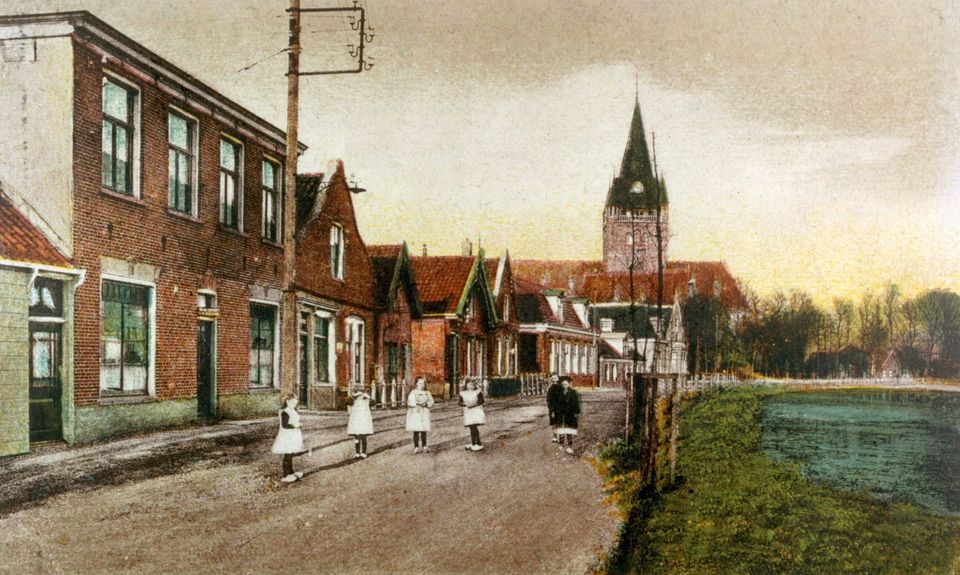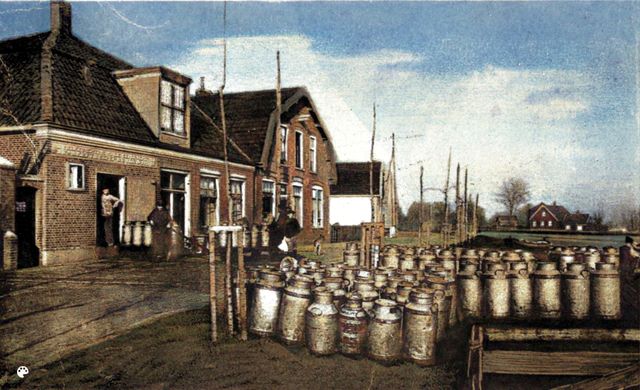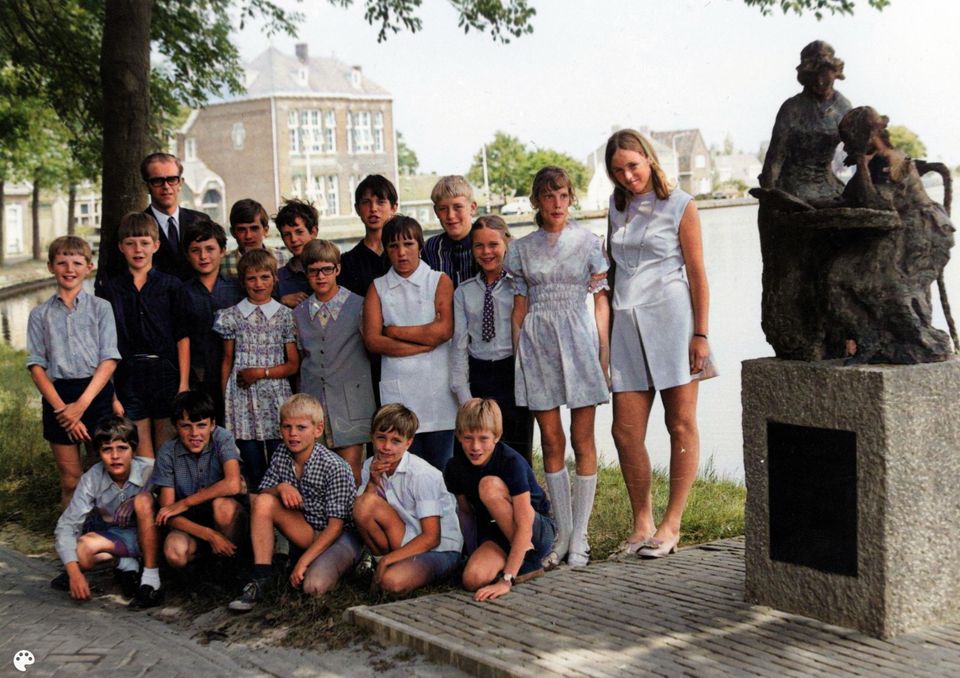
Panel 5 - Nes aan de Amstel
Originally, the village was situated on a peninsula (= Nes) on the east bank of the Amstel River. By cutting off the bend, an island was formed. The old river arm silted up, connecting Nes to the west bank. In 1891, the village gained a new look with the characteristic Urbanuskerk, prominently located on the Amstel. A little further, the robust Sint Josephschool was built in 1921. The village had an active retail sector with two grocery stores, a butcher, a shoemaker, three carpenters, and a blacksmith. There was also the Bellevue hotel and the Nieuwendijk dairy factory. One of the products made there was chocolate milk named 'Hollands Glorie'.
Cycling Race
Since 1956, the Nes cycling race …
Originally, the village was situated on a peninsula (= Nes) on the east bank of the Amstel River. By cutting off the bend, an island was formed. The old river arm silted up, connecting Nes to the west bank. In 1891, the village gained a new look with the characteristic Urbanuskerk, prominently located on the Amstel. A little further, the robust Sint Josephschool was built in 1921. The village had an active retail sector with two grocery stores, a butcher, a shoemaker, three carpenters, and a blacksmith. There was also the Bellevue hotel and the Nieuwendijk dairy factory. One of the products made there was chocolate milk named 'Hollands Glorie'.
Cycling Race
Since 1956, the Nes cycling race has been held annually. This spectacle has seen top athletes like Gerrie Knetemann, Jan Jansen, and of course, local hero Peter Post participating. The race is known as a 'Belgian' course, a small-scale sporting challenge with multiple laps around the Bovenkerkerpolder. Start and finish traditionally take place at the café. The village has more annual traditions, such as the three-day Village Festival. A recurring event is the football match between two local teams. The highlight is the mud and ditch race through muddy farm ditches.
Back to the route




